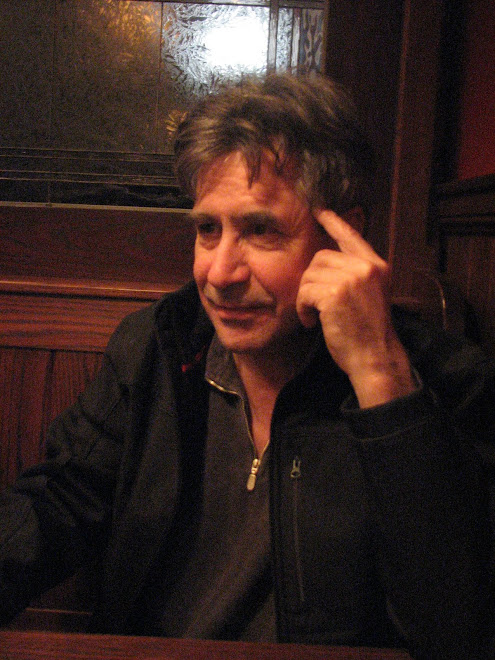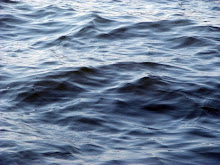
Tugboat Mirene, 1912

Stewart Brand

courtesy Long Now Foundation
Stewart Brand, mastermind behind the Whole Earth Catalog, an author concerned with subjects as varied as cybernetics and the evolution of buildings who describes himself as a finder(of ideas) and a founder (of foundations and such), a perfectly 'Brandian' turn of phrase, showed up in an email from my brother John today. Originally an article in the NY Times by Edward Lewine, it came to me as a post on South Williard . Stewarts current project is called the Long Now Foundation and is dedicated to fostering long term vision and thinking as opposed to the faster/cheaper paradigm which seems to (still) be the vision of most business and political thought. Stewart and his thought and projects, WEC in particular have been a huge influence in my life. Enjoy this:
Brand lives on Mirene, a tugboat moored in Sausalito, on the San Francisco Bay.
By EDWARD LEWINE
NY Times Published: April 15, 2009
Deceased 1960s pal he’d like to see again: Abbie Hoffman. He was brilliant and a card and dangerous to know and delightful in every way.
His best line: In 1966 I had buttons made with the paranoid-sounding slogan, “Why haven’t we seen a photograph of the whole Earth yet?” Well, we got the photos from NASA in 1969.
Moving house: The Mirene is a working, 64-foot-long tugboat built in 1912. We take the boat out cruising from time to time. We turned the wheelhouse and skipper’s cabin into our bedroom, with two rooms and a bath below.
Why a boat: The main thing is our houseboat community here, which is exceptionally congenial. The boat is inexpensive to live on, and you have no problem with earthquakes, wildfires or rising sea levels due to global warming.
Green living: I didn’t choose the boat because it’s green, but it is. It doesn’t take much to heat 450 square feet. Cooling is no issue on the water. We have solar panels and a demand water heater and use biodiesel fuel when we cruise.
Morning routine: Get up at 6:30 or 7:00 a.m. The trip from the bedroom involves going down a ladder outside. I breakfast in the galley and then go off to work.
Job description: I design stuff; I start stuff; I found stuff. On the passport I put “writer.”
Bad trip: That was my first trip. I had 400 micrograms of LSD under quite clinical circumstances at a psychological research institute in Menlo Park, Calif. It was in a white room with therapists sitting around.
Good trip: In 1963 or ’64 I showed up at the door of Ken Kesey, the novelist and LSD evangelist. I was involved in Kesey’s Acid Tests, which were happenings where LSD made its way around and everyone was there to entertain each other.
Acid Test memento: I have my Acid Test graduation diploma. The conceit was, “Can you pass the acid test?” Mine was signed by Neal Cassady, who inspired Kesey and was the model for Dean Moriarty in Jack Kerouac’s “On the Road.”
On the wagon: Since 1969 I haven’t used psychedelics. I realized I’d seen all I needed to see.
Drug of choice: I’m stoned right now on two cups of coffee. I’m 70, and the easiest way to young-up your mind is to drink caffeine.
Worst thing about the 1960s: Let’s see. I made the mistake of being married during the sexual revolution. Nice marriage; inopportune timing.
Pets: We had cats, but we had to put them down. That was horrifying, and we replaced them with a life-size stuffed tiger.
Home office: I work in a landlocked fishing boat named the Mary Heartline, which sits about 100 yards from the tugboat in a parking lot. It looks like a Victorian cottage.
Item you need on a tugboat: You’ll always be glad that someone has stolen a shopping cart, so you can get stuff from your car to your boat.
Controversial stand: That technology can be green. The book I just finished, “Whole Earth Discipline,” has chapters on why nuclear is green, cities are green, genetic engineering is green. The romantic nature-is-perfect approach is just horse exhaust.
Back to the WELL: I founded the WELL, a pioneering online community, in 1985, with Larry Brilliant and some others. The name is short for Whole Earth ’Lectronic Link. I have the American Heritage Dictionary I used to find the name.
Exercise routine: I hike Mount Tamalpais.
Evening routine: My wife, Ryan Phelan, and I tend to go to restaurants or throw together a dinner around 9 p.m. I’ll read a novel or a comic. We’ll take a bath together and be in bed by 11:30.
Favorite gadget: I have this memo-keeping device that must be 75 years old. It’s from the house I grew up in in Illinois. It uses rolls of adding-machine paper — which you can still get — and you write on it and tear the paper off.
Obsession: Getting rid of alien, invasive plants. I bear down on this form of pampas grass that comes from South America and has no business in California.
Art collection: We don’t have room for much. We do have a 1.5-inch-long enamel drawing of the Mirene under fireworks in the bay.
What he drives: A Land Rover LR2. As soon as there’s a good hybrid S.U.V., we’ll get one. We need a mountain vehicle.
Favorite item in boat: I have the table at which Otis Redding reportedly wrote “Dock of the Bay.” An antiques dealer in Sausalito obtained it. Everyone likes to believe the legend.
Native American memorabilia: I used to be a member of the Native American Church. I have my old peyote-ritual gear: the feather box, eagle-bone whistle and tortoise-shell rattle. That’s for use with peyote, a spineless cactus that gives you an eight-hour trip.
Favorite vacation: We got a weekend place on the Petaluma River. It is a dead dairy farm, and that is where we are every weekend.
Always in fridge: Root beer and Häagen-Dazs vanilla ice cream. I love root-beer floats.
Next big purchase: Hearing aids. That is going to be $2,000 or more.
At age 5, he wanted to be: A veterinarian. As an early teenager I wanted to fight forest fires.
Current project: With the Long Now Foundation, I am helping to build a 10,000-year clock inside a mountain in Nevada. We are trying to get people to think long-term, because civilization’s shortening attention span is mismatched with the pace of environmental problems.
MAY 2ND, 2009






2.JPG)





















8 comments:
Thank you. It's hard to believe someone still lives the life and principals they held way back in those days. I used to cherish ever copy of the whole earth catalogue, which layed out much of my reading habits for a couple of decades. Unlike Brand I accepted a job and then lifestyle which compromised those 60's dreams.
Glad to learn he is still about.
I couldn't agree more. I always felt Stewart was an inspiration, and no less so today!
This post really brings back the memories. The first Whole Earth Catalog I ever saw contained a grainy black and white image of a flying hydrofoil sailboat, with the address of the Amateur Yacht Research Society. Thanks for the post. - Michael
Michael, I don't know how old you are but...how did that image and the AYRS influence you, and your design career, if at all?
Excellent post Thomas.
And a beautiful boat as well.
I think this was one of your most interesting and original posts: who imagined Brand lived on a small ship? One of my favorite books of his – and a wonderful, metaphoric guidebook for anyone interested in web development, btw – is How Buildings Learn: What Happens After They're Built. As this blog develops, and the tracks you're following become more arcane and unlikely, the better it becomes (much as I love Robert Knox Johnston – 'raced' against him in the '78 Round Britain and Ireland Two-Handed – I, too, am a lot more sympathetic to Moitessier and those he inspired (the Berque twins, for example, and every non-materialistic, dope-smoking solo sailor there every was).
thanks to all, but especially Creed, the Moitessier sentiment is right on target. Please start writing again!
thomas
I really relate to Stewart's comment about being married in the 60s...I always said I was a POW during the sexual revolution and didn't get to participate. It's okay, though, the divorce ended up only costing me $16.25 plus the cost of the legal-size paper to type it up on...but that's another story.
Post a Comment